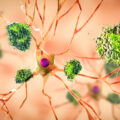Insulin sensitivity can be described as the response the body elicits following the release of insulin. When the sensitivity is high, the body will require a small amount of insulin to reduce blood sugar levels. On the other hand, when sensitivity is low, the body may fail to respond to even high levels of insulin. Insulin is an essential hormone that is responsible for regulating the levels of blood sugar. The converse of insulin sensitivity is insulin resistance.
Insulin is made by beta cells in the pancreas. When cells are insulin resistant, they can’t use insulin effectively, and this means that you are likely to have high blood sugar levels. When your pancreas senses high blood sugar, it makes more insulin to overcome the resistance, but this may not improve the situation in the long run. Chronic insulin resistance, which is common in type 2 diabetes, may deplete beta cells in the pancreas. Also, prolonged high blood sugar can damage nerves and organs. Improving insulin sensitivity can help to reduce insulin resistance.
Here are 8 ways to improve insulin sensitivity.
1. Eat More Soluble Fiber
There are two kinds of fiber; soluble and insoluble. Insoluble fiber helps in forming stool that can easily move through the bowels. Soluble fiber, on the other hand, plays a huge role in promoting insulin sensitivity. A study published in NCBI showed that soluble fiber plays a role in increasing insulin sensitivity. Another study also showed that women who ate more soluble fiber had significantly lower levels of insulin resistance. Soluble fiber promotes the growth of friendly gut bacteria in your gut which has been linked to decreased insulin resistance.
Foods that are rich in soluble fiber include legumes, oatmeal, flaxseeds, Brussels sprouts, and fruits like oranges.
2. Eat More Colorful Fruit and Vegetables
Colorful fruits and vegetables are rich in antioxidants. Antioxidants eradicate free radicals which can cause harmful inflammation and insulin resistance.
3. Use Herbs and Spices
A number of spices play a role in promoting insulin sensitivity. They include:
- Fenugreek seeds have high soluble fiber content. A 2001 study concluded that “fenugreek seeds improves glycemic control and decreases insulin resistance in mild type-2 diabetic patients.”
- Turmeric contains an active component called curcumin, which has strong antioxidant and anti-inflammatory properties. Both these properties help to reduce insulin resistance.
- Ginger contains a component called gingerol which increases sugar uptake and improves insulin sensitivity.
- Cinnamon is known for its ability to reduce blood sugar and increase insulin sensitivity. Yet other studies have shown that cinnamon can mimic the action of insulin in fat cells.
4. Drink More Green Tea
Green tea is a choice drink for people with diabetes type 2. Green tea has been linked to increased insulin sensitivity and reduced blood sugar levels. Green tea also has antioxidants that help to fight off free radicals. Green tea also has` other numerous health benefits.
5. Try Apple Cider Vinegar
Vinegar is a key ingredient in apple cider vinegar which could help increase insulin sensitivity by reducing blood sugar and improving the effectiveness of insulin. Vinegar also helps to slow gastric emptying hence allowing time for the body more time to absorb sugar. This gives insulin more time to act. Apple cider vinegar can be added to cold salads or drinks.
6. Cut Down on Carbs
Carbs are the main stimulus behind high sugar levels and the production of insulin. Carbs release sugar into the bloodstream when they are broken down. They are essential as a source of energy for the body. When the body breaks down carbs glucose and releases it into the blood, the pancreas releases insulin to move the sugar from the blood into the cells. Consuming excessive carbs could cause insulin resistance because of the overproduction of insulin. Reducing your carbohydrate intake could increase insulin sensitivity. This does not mean eliminating entirely but reducing and spreading out your intake of carbs. Processed carbs that are likely to trigger insulin resistance include white rice, pasta, and white bread.
7. Avoid Artificial Trans Fats
Transfats are partially hydrogenated oils that are usually added to processed foods to help them keep for longer. They also add taste to processed foods. Foods that typically contain artificial trans fats include cakes, cookies, pies, doughnuts, and fried fast foods. Artificial trans fats are typically found in more processed foods.
Transfats have been shown to cause inflammation and increase the risk of type 2 diabetes.
The US Food and Drug Administration (FDA) declared trans fats unsafe to eat in 2018. However, this directive is yet to be implemented by manufacturers. It is up to you the consumer to scrutinize the ingredient list before buying any processed foods.
8. Reduce Your Intake of Artificial Sugars
Artificial sugars are mostly found in processed foods and they contain two main types of sugar: high-fructose corn syrup and table sugar, also known as sucrose. Fructose has been linked to insulin resistance even in people with no diabetes. Foods such as candy, sugar-sweetened beverages, cakes, and pastries are likely to contain a lot of artificial sugars.
Can Supplements Help To Improve Insulin Sensitivity?
The idea of taking natural supplements is a controversial one and may require consultation with your physician. However, if you have been diagnosed with insulin resistance you may benefit from taking supplements that increase insulin sensitivity. They include chromium, berberine and magnesium supplements which are linked to increased insulin sensitivity. Another compound – Resveratrol -found in the skin of red grapes and other berries also appears to increase insulin sensitivity in people with type 2 diabetes.
Since supplements can interact with other medication it is important to consult your doctor before you start taking them.
References
1. NCBI (2011): Trans Fatty Acids Induce Vascular Inflammation and Reduce Vascular Nitric Oxide Production in Endothelial Cells. Retrieved from https://www.ncbi.nlm.nih.gov/pmc/articles/PMC3247279/
2. NCBI (2013): Adverse metabolic effects of dietary fructose: results from the recent epidemiological, clinical, and mechanistic studies. Retrieved from https://www.ncbi.nlm.nih.gov/pubmed/23594708
3. NCBI (2014): The impact of soluble dietary fiber on gastric emptying, postprandial blood glucose and insulin in patients with type 2 diabetes. Retrieved from https://www.ncbi.nlm.nih.gov/pubmed/24901089
4. NCBI (2013): The Role of Gut Microbiota on Insulin Resistance. Retrieved from https://www.ncbi.nlm.nih.gov/pmc/articles/PMC3705322/
5. NCBI (2001): Effect of Trigonella foenum-graecum (fenugreek) seeds on glycaemic control and insulin resistance in type 2 diabetes mellitus: a double blind placebo controlled study. Retrieved from https://www.ncbi.nlm.nih.gov/pubmed/11868855
6. NCBI (2014): Effect and mechanisms of action of vinegar on glucose metabolism, lipid profile, and body weight. Retrieved from https://www.ncbi.nlm.nih.gov/pubmed/25168916






